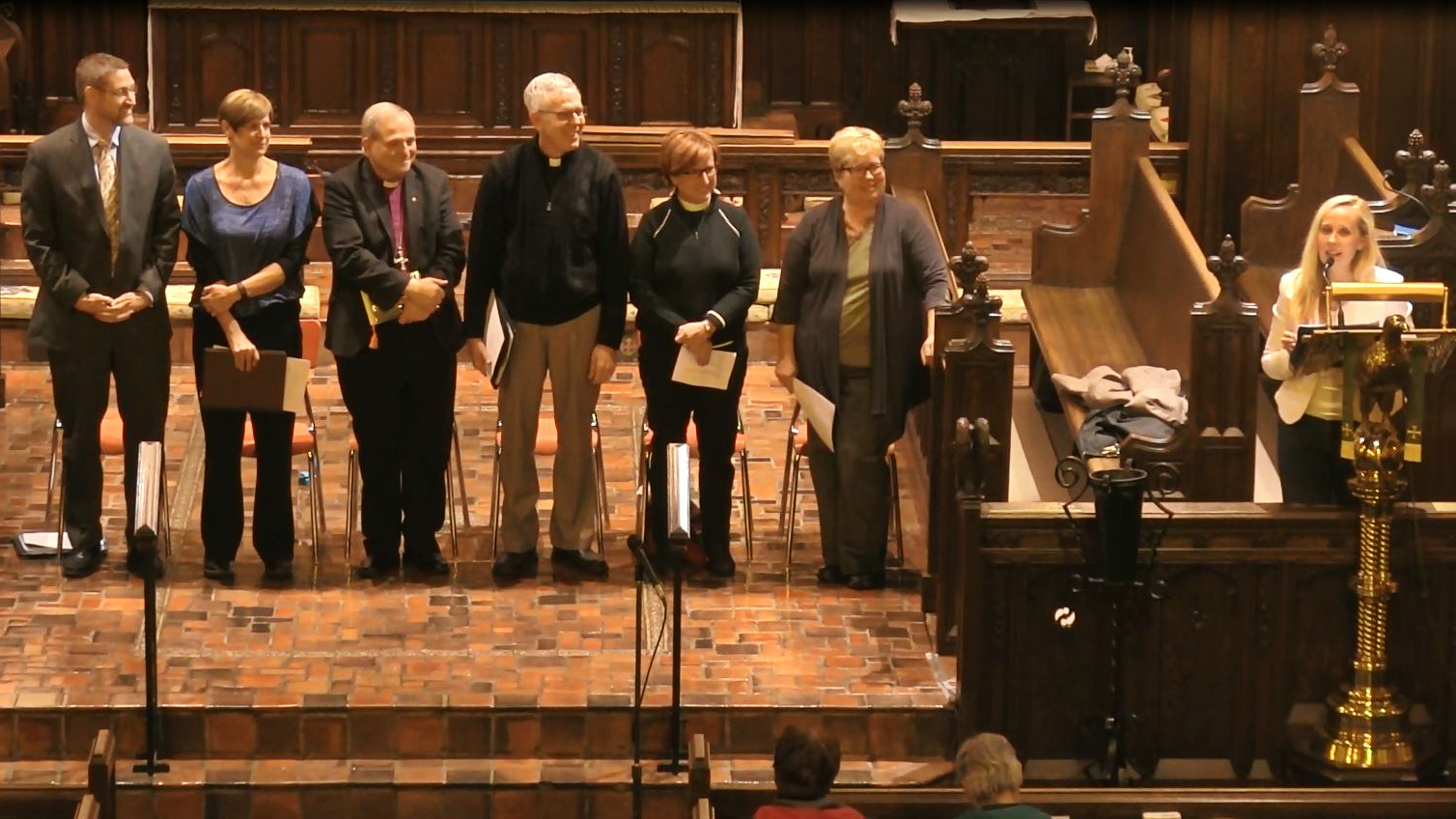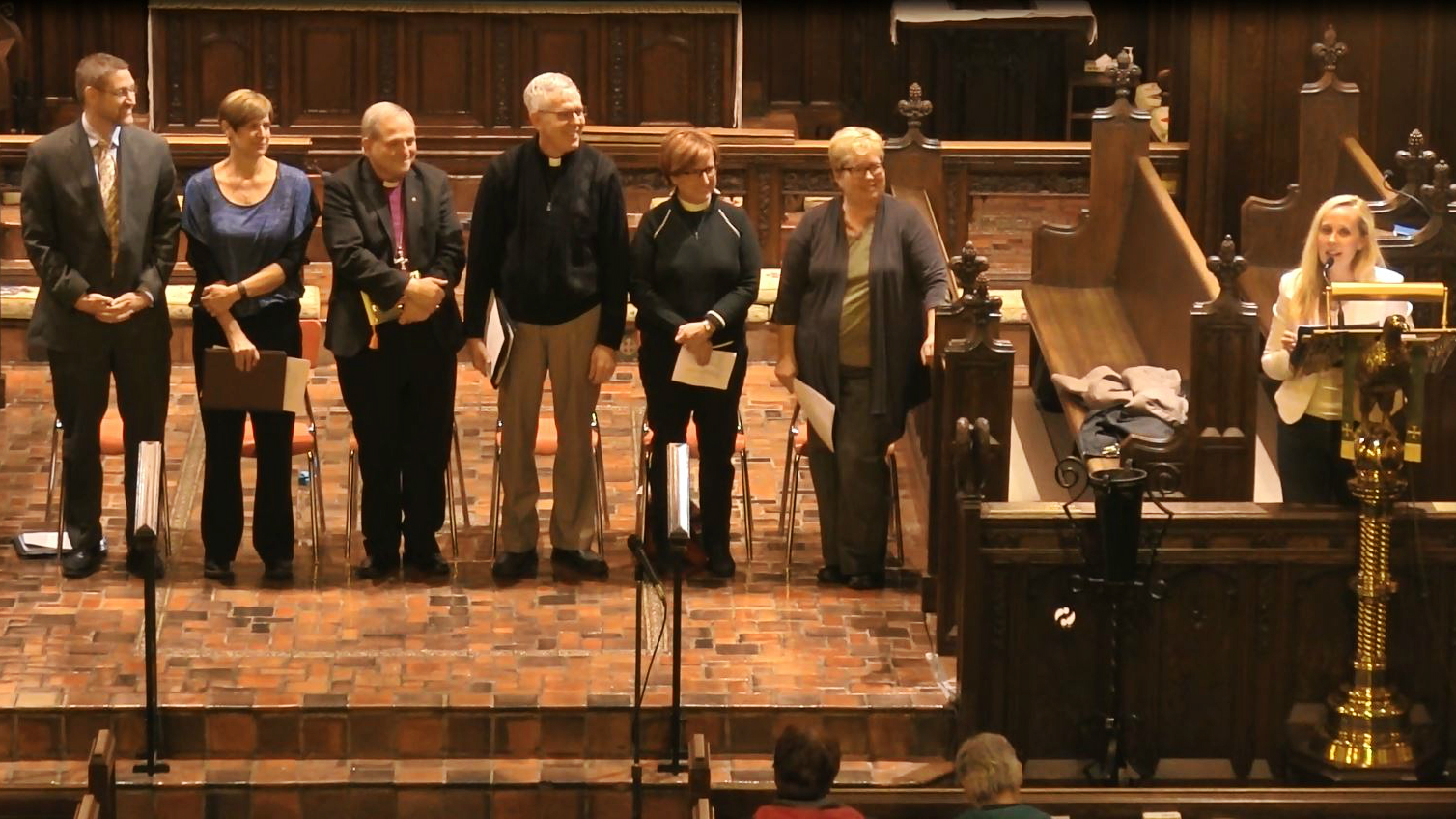
“We’re excited to report that all 11 participating St. Catharines area congregations have signified their commitment to new shared ministries, renewed faith formation, joint community engagement initiatives and a collaborative model for implementation of the recommendations and ensuing ministry,” exclaimed Canon Martha Tatarnic, Rector of St. George’s St. Catharines, at the December meeting of Synod Council, the governing body of Niagara Diocese.
The good news came from a delegation presenting the final report, including 17 recommendations, of the Greater St. Catharines Anglican Church Discernment Conversation.
Taken together, it represented the culmination of nearly two years work, fulfilling Bishop Michael’s original mandate, to discern God’s call to strengthen and support the Anglican Church in the St. Catharines area.
“This trailblazing work,” continued Martha, “mirrors the City of St. Catharines own ‘process of reimagining itself.’” There, downtown businesses are being revitalized and significant investment is happening in arts and culture, the university and regional transit, all of which carry important missional opportunities.
During the process, “participants discussed the health of their congregations, shared their programs and missional elements, learned about other forms of ministry and worship, and discussed underlying issues impacting each congregation’s ability to be thriving, relevant and impactful.” Canon Christyn Perkons, director of congregational support and development, facilitated the ground-breaking work and will continue to support any new ministry initiatives, beginning with the establishment of an animation team.
Sandra Thomson from St. James Merritton invited Synod Council members to open their minds to the possibilities. “Can you imagine what will come out of having a place where there is a focus on the larger community and cooperation across all parishes on common goals and missions?”
The possibilities deal with staffing, faith formation and worship, social justice and outreach, children-youth and family ministry and church buildings. If fully implemented, ministry teams will be formed and opportunities for collaborative area-wide ministry seized. There may also be a reduction in the number of parishes. “This report charts a course for a Spirit-led renewal of our ministry in the St. Catharines area,” Christyn observed.
To deepen parish relationships and effectively meet more needs, the report recommends three clusters of churches: One in the north (St. John Port Dalhousie, St. Columba, Christ Church and St. George’s Homer), another in the city centre (St. George’s, Grace, St. Thomas’ and St. Barnabas’) and the third cluster in the south (St. James’, Transfiguration and St. John the Evangelist Thorold).
Already some shared ministries are happening. In the south parishes shared summer services and a joint youth group exists in the centre. Some city-wide worship services have been held, as well as St. George’s and Grace exploring ways of doing ministry as one.
There were no recommendations regarding the closing of any specific parishes, but each cluster is to “continue the process of relationship building and partnering to right-size our property footprint.”
The presenters suggested the process used by the Greater St. Catharines parishes “can be a model to others across Canada and even across the communion in terms of re-imagining our church.” Bishop Michael agreed, observing it may very well be unique in the Anglican Church of Canada.
Synod Council expressed “gratitude to the 11 parishes who worked for two years to discern new ways of undertaking ministry in their wider community.” They also encouraged the Bishop to support the implementation of the proposed ministry initiatives.
Condensed from the diocesan website. Original article written by the Reverend Bill Mous. The full report is available at niagaraanglican.ca

Starting Fresh: Spiritual Resolutions for a Faith-Filled 2026